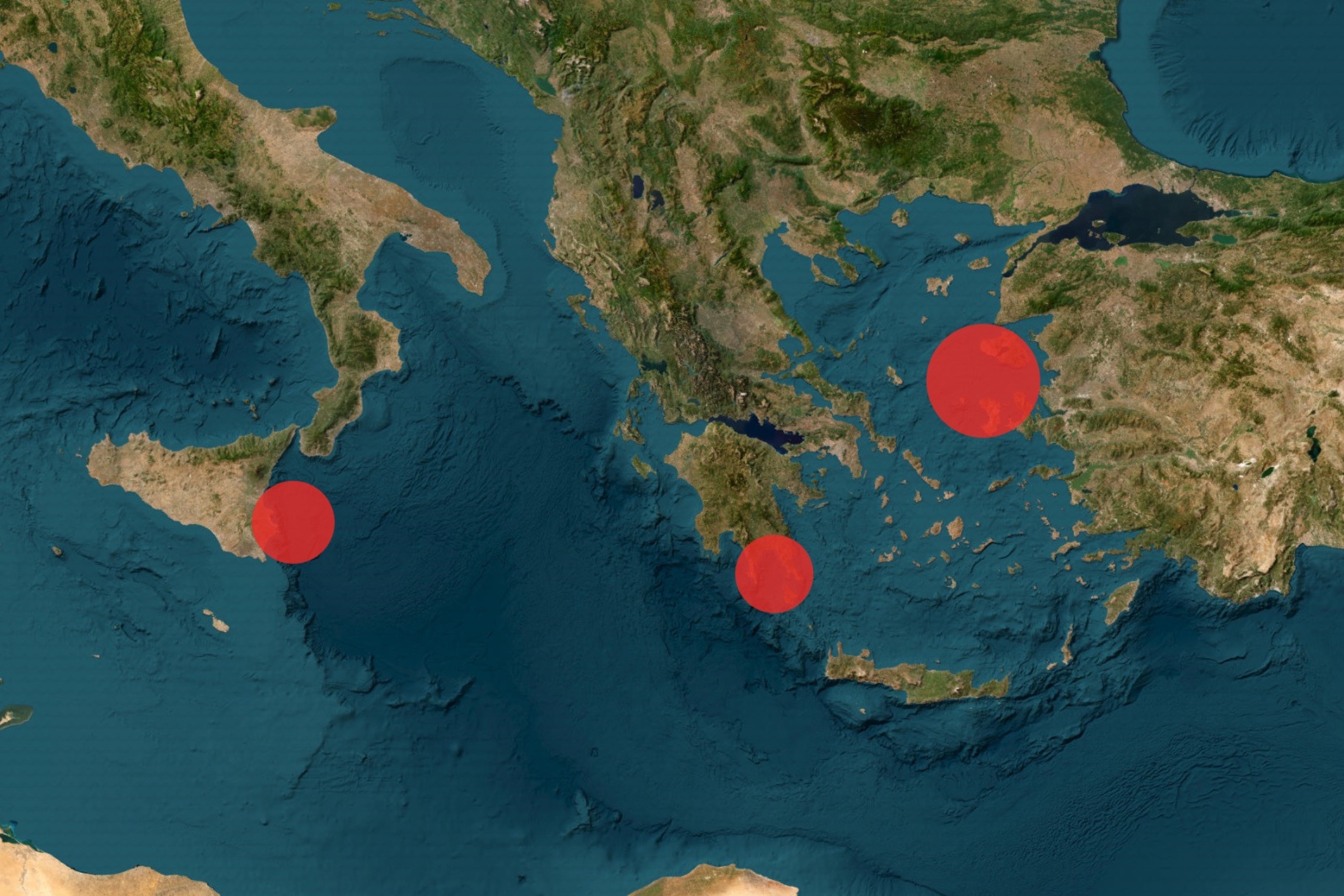The United States will deploy missiles on Japan's southwestern islands and the Philippines in the event of a major crisis involving China and the self-ruled island of Taiwan, according to a media report.
The news, which was reported on Monday by Japan's Kyodo News citing sources familiar with Japan-U.S. relations, came after Admiral Samuel Paparo, the head of the U.S. Indo-Pacific Command, said China had staged the largest rehearsal for an invasion of Taiwan of his career.
In October, the Chinese military engaged in drills focusing on combat patrol, blockades of key ports and areas, as well as assaults on sea and land targets around Taiwan. Beijing has stated that it "will not renounce the use of force" against Taiwan.

Taiwan forms part of the first island chain, a U.S. defense concept that extends from Japan southward to the Philippines. It aims to leverage allied or friendly territories to contain the Chinese military in the region, especially the country's navy, which is the world's biggest.
According to the report, a joint-operation plan for the U.S. and Japan, which is a security treaty ally of Washington, will involve missile systems assigned to the U.S. Army's Multi-Domain Task Force, as well as the Marine Littoral Regiment of the U.S. Marine Corps.
Long-range fire units of the Multi-Domain Task Force will be sent to the Philippines, a security partner of the U.S. that is located south of Taiwan and southeast of China, should a contingency over the Taiwan Strait become "highly imminent," Kyodo News said.
Newsweek has reached out to the Pentagon, as well as the defense ministries in Beijing and Tokyo, for comment via email. A spokesperson for the Armed Forces of the Philippines declined to comment.
The Multi-Domain Task Force, capable of operating in air, land, water, space, cyber, and information domains, provides precision countermeasures against an adversary's anti-access/area denial (A2/AD) networks that would aim to hinder the U.S. military from coming to Taiwan's aid.

In April, the Multi-Domain Task Force deployed a Mid-Range Capability (MRC) missile launcher to northern Luzon in the Philippines for drills. Both the U.S. and the Philippines, which are parties to a mutual defense treaty, have decided to keep it there indefinitely.
The missile system can fire anti-surface and anti-air missiles, the Tomahawk and the Standard Missile 6, with respective ranges of 1,000 and 290 miles. The former puts targets in south and east China, as well as Taiwan and the Taiwan Strait within its sights.
Meanwhile, U.S. forces would be deployed along Japan's Nansei Islands, also known as the Southwest Islands. The island chain is situated to the southwest of Japan's main island of Kyushu and to the north of Taiwan, facing the East China Sea to the west.
Temporary bases would also be set up on other Japanese southwestern islands, the report added. It is expected that Japanese Forces would mainly engage in "logistical support" for the U.S. Marine Corps' Marine Littoral Regiment, including fuel and ammunition supply.
The Marine Littoral Regiment is designed as a self-deployable, multi-domain force. The unit can engage in operations such as strike, air and missile defense, as well as naval surface warfare in austere, temporary locations ashore within contested maritime spaces.
The unit operates several missile systems, including the High Mobility Artillery Rocket System (HIMARS). It provides mobile, precision fire capability by launching one to two missiles or six rockets at once, with a maximum range of at least 310 miles.

Another missile system is the Navy-Marine Corps' Expeditionary Ship Interdiction System (NMESIS), which is a ground-based weapon that equips a vehicle with a launcher for the anti-ship Naval Strike Missile. It is capable of targeting hostile surface ships over 115 miles away.
Kyodo News said the operation plan, which is the first for the U.S. and Japan to deal with a potential Chinese invasion of Taiwan, will be put together in December, a month before U.S. President-elect Donald Trump, who has cast doubts over using U.S. forces to defend Taiwan, is sworn in.
The U.S. has maintained "strategic ambiguity" over whether it would intervene militarily against China if Beijing used force to coerce Taiwan into unification with the mainland, though previous and current administrations have strongly hinted or even stated that they would.



















 English (US) ·
English (US) ·